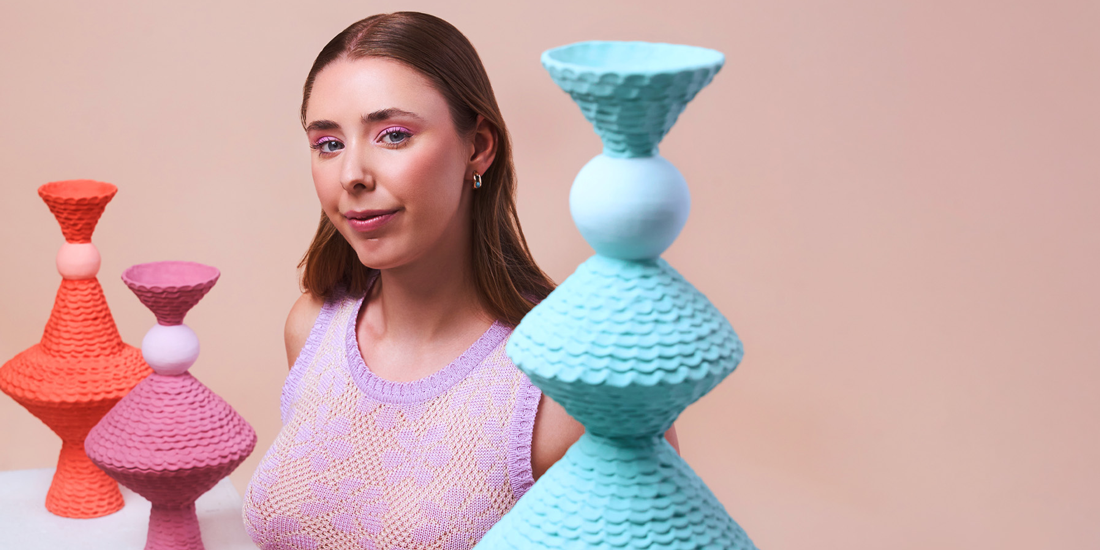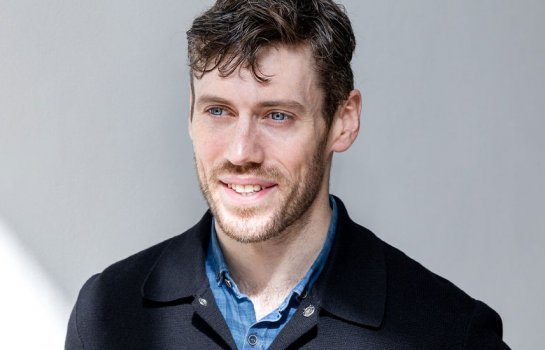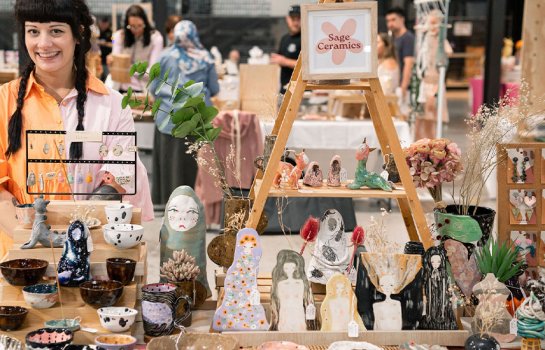Steph Woods, artist, Clay: Collected Ceramics
Clay has the ability to be shaped, pulled and prodded into basically any desired shape, as though it has limitless potential, which is an amazing tool for an artist ...
For most of us, our relationship with ceramics starts and ends with the clay mugs we made for our parents in primary school. More’s the pity, because ceramic art might be the most unsung hands-on art form going. Just ask Steph Woods, a contemporary ceramic artist who has taken her love of sculpture and turned into a blossoming artistic practice. Steph’s unconventional ceramic vessel, which often explore form, colour and texture, have been seen in galleries and showrooms in Australia, France, and Canada, but right now you can see some at Museum of Brisbane’s latest exhibtion, Clay: Collected Ceramics. We spoke to Steph about her love of clay play, her individual style and what makes ceramic art special.
To start, we’d love to know where your love of clay – and your desire to transform clay into ceramic pieces – first began. What ignited the spark to create?
I fell in love with clay in high school art class, surprisingly, and revived this passion when I was mid-way through my Fine Arts degree at university. From then on, I never looked back. I’ve always loved working with my hands and clay has the ability to be shaped, pulled and prodded into basically any desired shape, as though it has limitless potential, which is an amazing tool for an artist.
What would you say is a unique aspect of ceramic sculpture that sets the practice apart from other hands-on artistic mediums?
This is an interesting question! Ceramics gives me freedom like no other medium. I can speed up or slow down production by keeping the clay moist, using my own alternative methods to create – and experiment – possibly further than other mediums. The feeling of opening a kiln when you’re testing a new clay body, glaze and temperature – and you have no idea what the work will look like – is like no other!
We’d love to dive into your methods and approach to making. Do you have a process for getting the creative juices flowing and maintaining them?
Usually, I’m most productive when I have a healthy routine where I have plenty of designated time to work on my ceramics. I’m also very goal orientated, so when I’m working on a commissioned piece or project I take it very seriously and prioritise my practice until it’s complete. I’ve realised over the years that I can create anywhere, as long as it’s quiet and I’ve got enough space behind me for my enormous rescue greyhound, Allen.
What ideas or themes do you commonly explore through your work and what qualities would you say makes the pieces you create distinctively yours?
While at university, I was told that ceramics didn’t belong in the contemporary art world. My reaction to this statement was to create pieces that were rebellious in form and that didn’t require a function to be relevant as they were for artistic purposes only. This idea has become a staple in my art practice as I mostly create non-functional pieces that allude to a functional vessel. The uber-textural and vibrant colours I consistently use have also followed through in most of my works making them quite distinctive.
Do you have any sources of inspiration that might strike some as unconventional or surprising?
I find inspiration in unusual places such as fashion trends, glass art, and food. I can’t count the number of times I’ve looked at cake decorating on Instagram for colour combination and texture inspo!
Ceramic pieces often walk a line between fine art and functional items. Do you see utility as an integral part of your sculptural practice, or is the potential usage of a vessel secondary to other Characteristics?
I predominately create non-functional pieces, as I believe utilitarian features can sometimes overshadow the beauty of a piece as it sets creative limitations and users’ expectations. When you create ceramic art purely for decorative purposes it gives you the ability to think outside the box and that’s what I enjoy most about the practice.
A number of your pieces feature in Clay: Collected Ceramics, the Museum of Brisbane’s latest exhibition, which showcases ceramic work from more than 300 makers. Can you tell us a bit about the pieces of yours that feature in this collection and why you chose them to feature?
I created the series, Continuum, for the Museum of Brisbane’s exhibition as I wanted to capture the thought process of creating ceramics in a variety of conceptual sculptures. The collection is linear, to show a selection of forms growing and morphing into new shapes as they go along. The sphere featured in each vessel is to symbolise the rolling nature of ceramic art and how designs can be ever-changing.
What do you hope audiences take away from their visit to Clay: Collected Ceramics, specifically in regards to how it shapes their regard for the art form and the appreciation of the nuances of working with clay?
Clay: Collected Ceramics is an exhibition like no other that I’ve experienced in Brisbane. Being able to view such a wide selection of art from talented ceramicists all in one place is extremely special for our growing ceramic-loving community. When visiting the exhibition, it is undoubtedly evident that there are so many ways to create with clay and glaze, and each artist’s individuality shows through in the selection of unique art in the exhibition.
Clay: Collected Ceramics is on display at Museum of Brisbane until Sunday October 22. Entry is free and guests can visit between 10:00 am and 5:00 pm daily.



